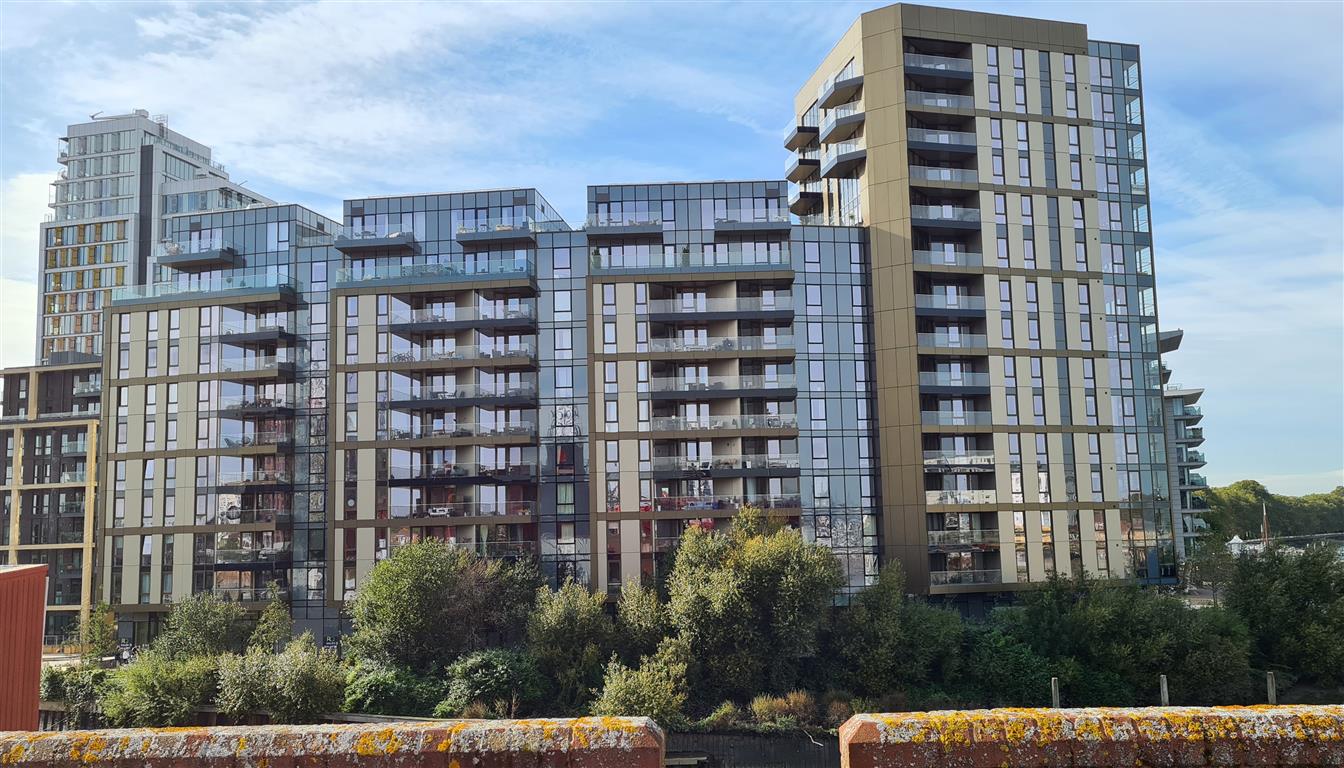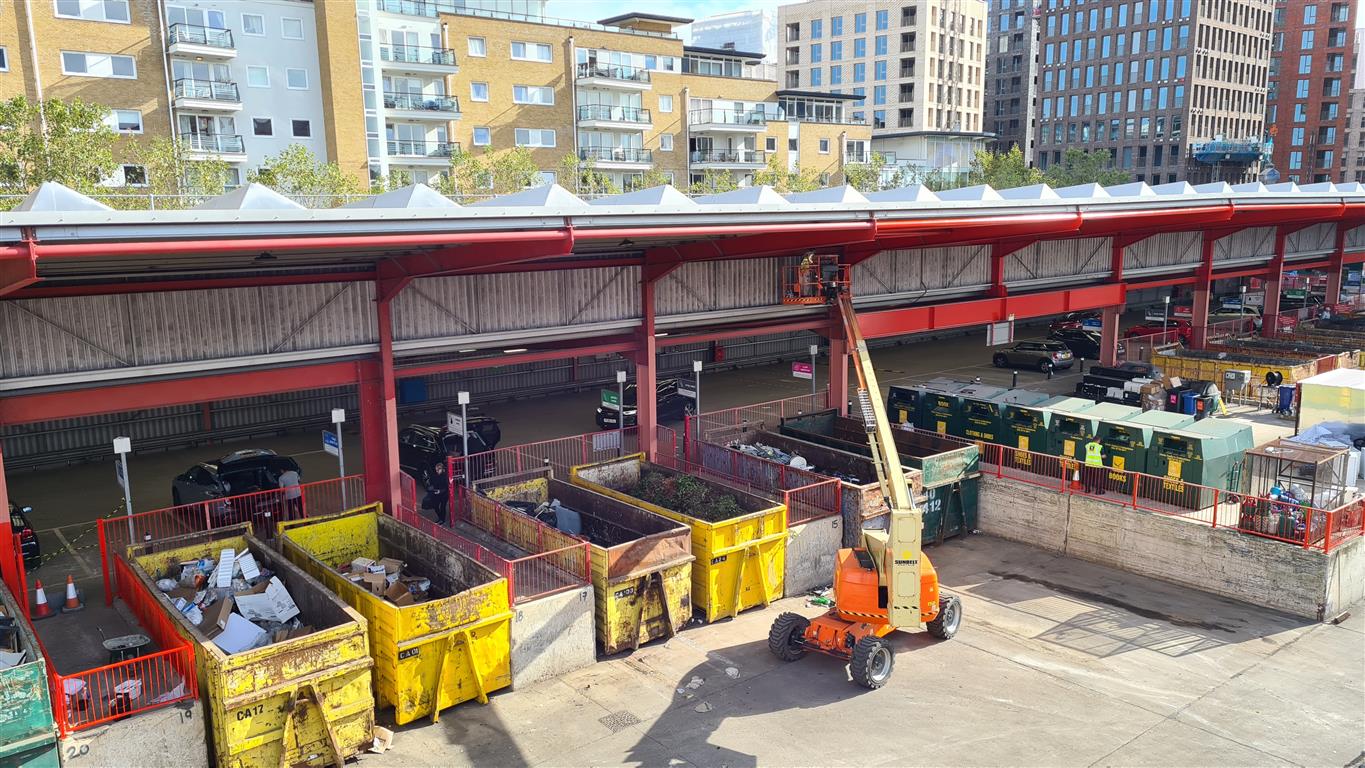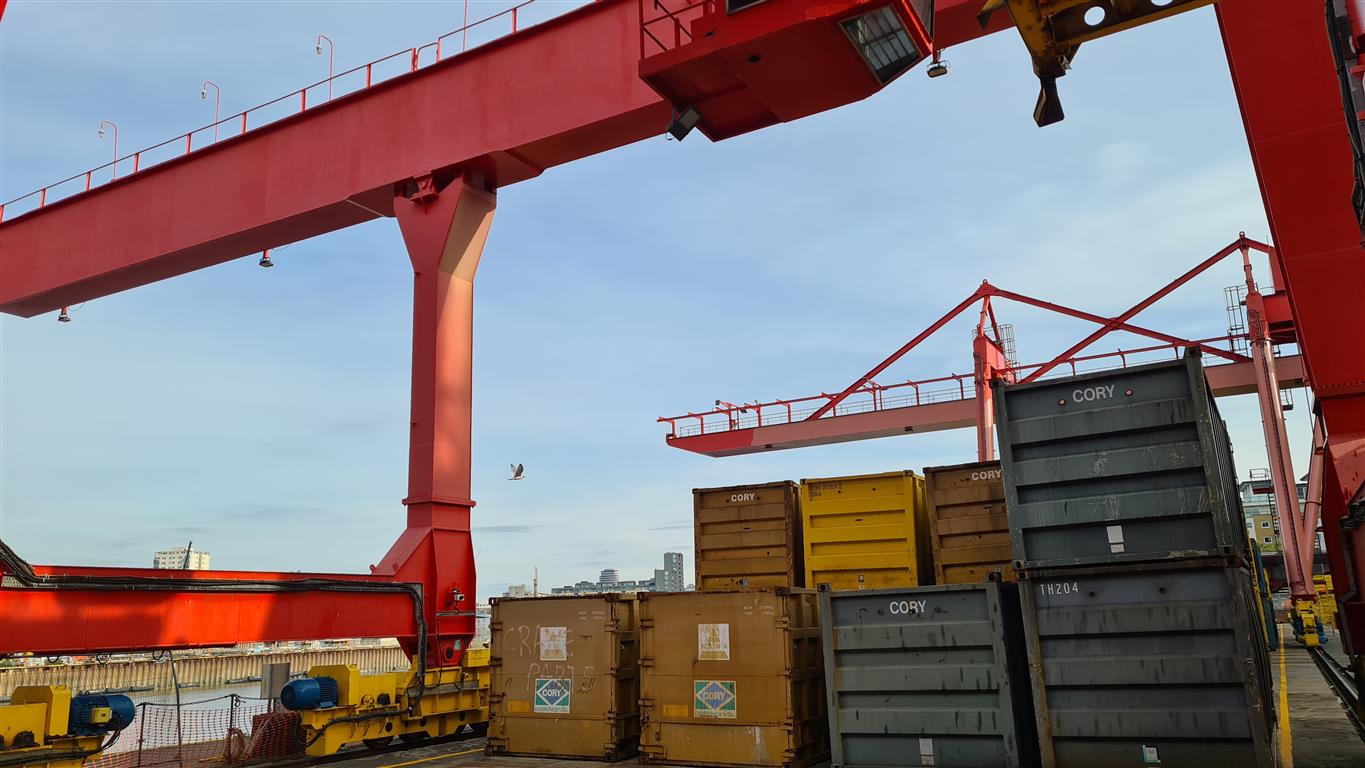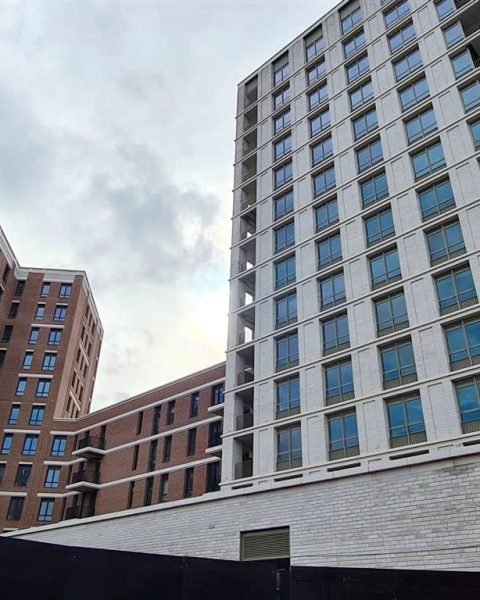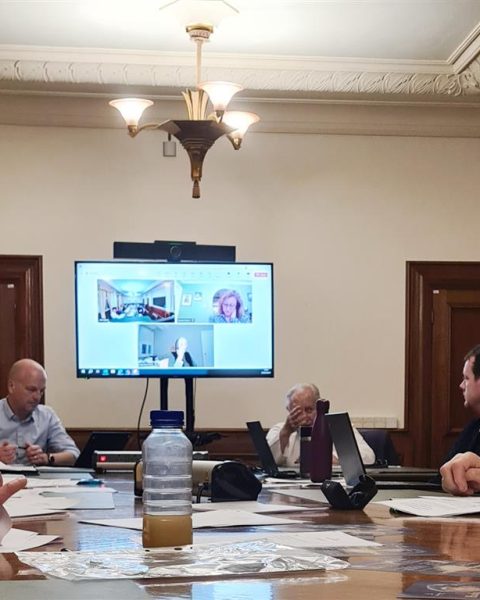This week marks Recycle Week, Recycle Now’s flagship annual event, which celebrates recycling across the nation. It’s an opportunity to discuss recycling, its processes, and encourage people to do more. In its 20th anniversary year, Recycle Week aims to inspire engagement from children, families, and entire communities.
One of the main aspects of the campaign is targeted at schools, encouraging children across the country to participate in enjoyable activities throughout Recycle Week. This year’s theme, “The Big Recycling Hunt” focuses on recyclable items that are often overlooked within households.
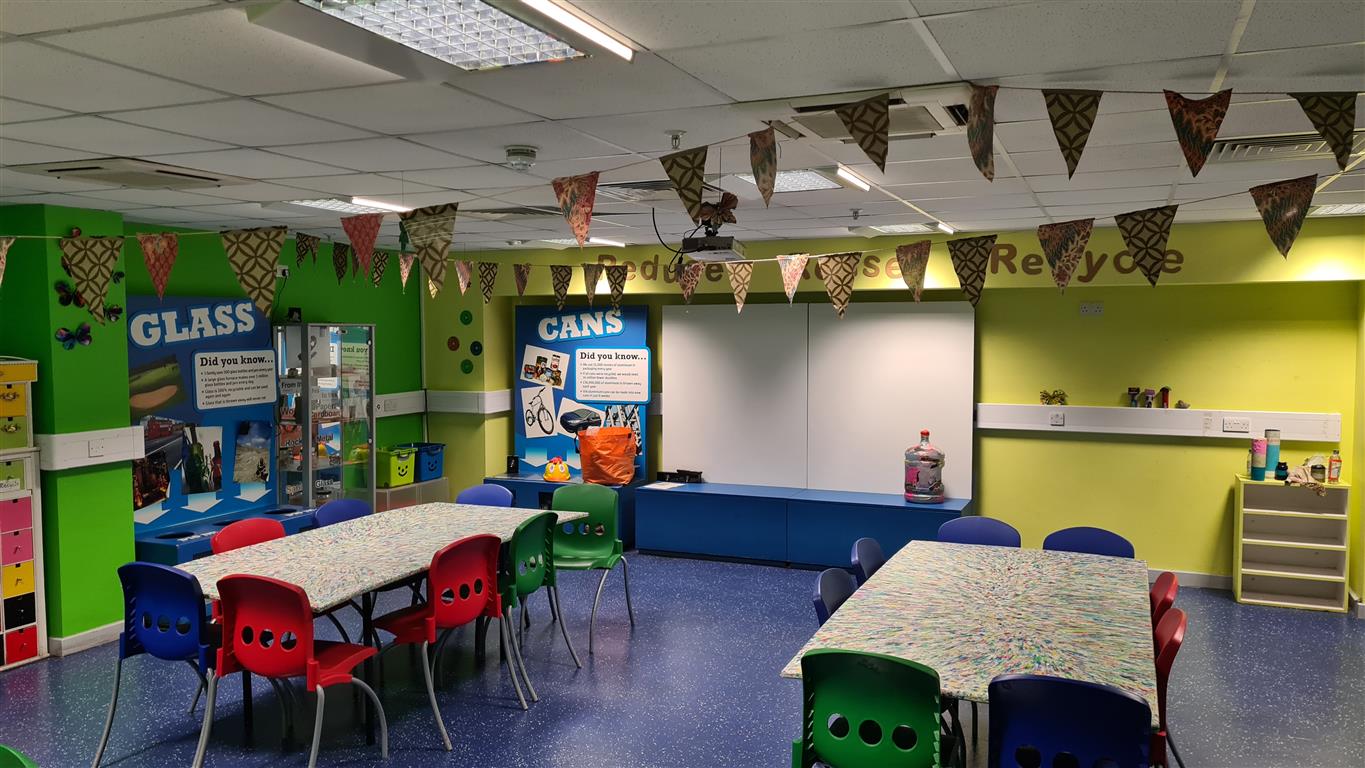
To take part in this week’s initiative, we thought it would be a great idea to visit the recycling centre located in Smugglers Way, near Wandsworth roundabout, to better understand the recycling process and demonstrate how things are done.
From the orange bags to the containers collected by barges, a full process
The recycling facility in Smugglers Way comprises three parts: an area where residents can come to sort their recycling into different crates, a waste transfer station and a building called the “MRF” (Materials Recycling Facility) or simply “the murf”.
The household recycling centre is where residents come, typically by car, to deposit their recyclables in various containers. These recyclables are sent directly to other facilities in the country as it is already mainly sorted.
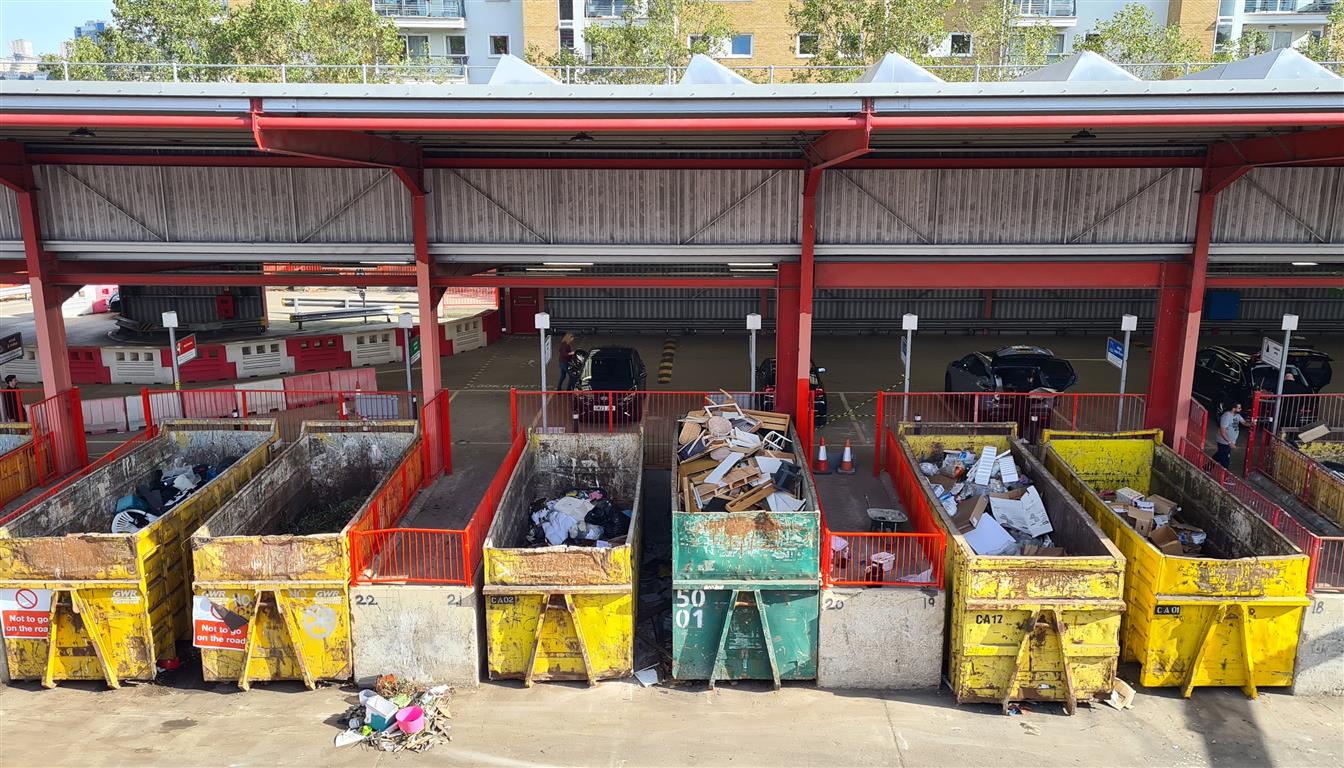
The waste collected by the boroughs is processed within the waste transfer station, which is the place where lorries come with their waste collections and dump them into the pit for general waste or on the recyclables stack.
Depending on the boroughs, lorries may have a split compartment to collect both general waste and recycling bags simultaneously (as is the case in Wandsworth and Kensington and Chelsea) or a single-use compartment. When the lorry arrives, it is weighed before tipping its content into the pit (the use of enclose pits in Smugglers Way reduces odours).
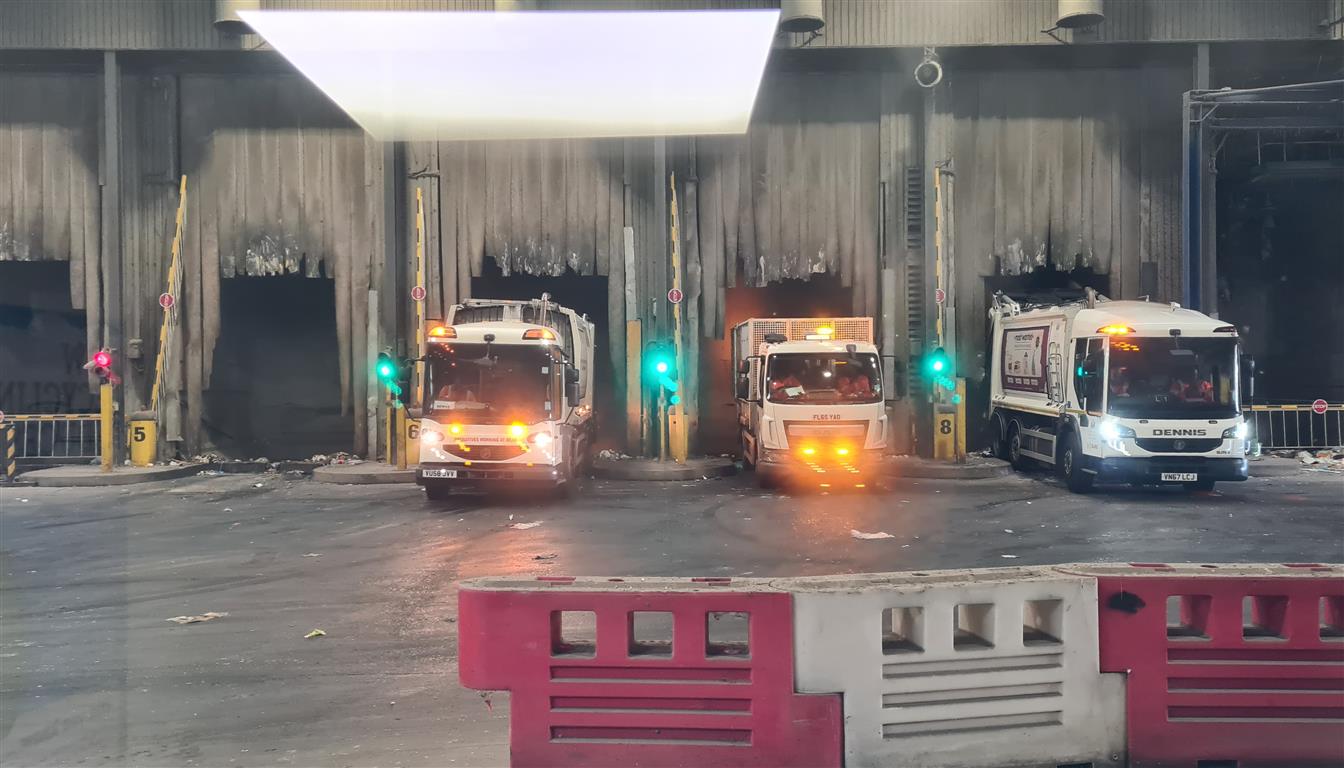
In the case of lorries with a split compartment, the process involves first weighing the lorry before tipping general waste into the pit, then reweighing it before tipping all recycling collections.
The weighing process is crucial as the WRWA charges the different Councils based on what type of material they have delivered. The bill is sent at the end of each month, with a cost of £160 per ton of general waste and £32 for recyclable waste. This serves as a significant incentive for Councils to encourage waste reduction and recycling, as sending less general waste to Smugglers Way results in substantial cost savings. The facility used by residents to sort their items in large crates is also charged to the Councils, but the levy depends on various criteria, such as the number of taxpayers in the borough.
General waste is then compacted and containers are sent to a facility in Bexley, where it is incinerated and transformed into energy, primarily electricity. The ash produced is also recycled. The volume of waste sent to landfills by local authorities in London has been decreasing since 2001 and is now close to zero.
Recyclable waste is processed within the main building, the MRF (pronounced “murf”), where lorries will tip their recyclable collection. The MRF receives, separates, and sorts recyclable materials.
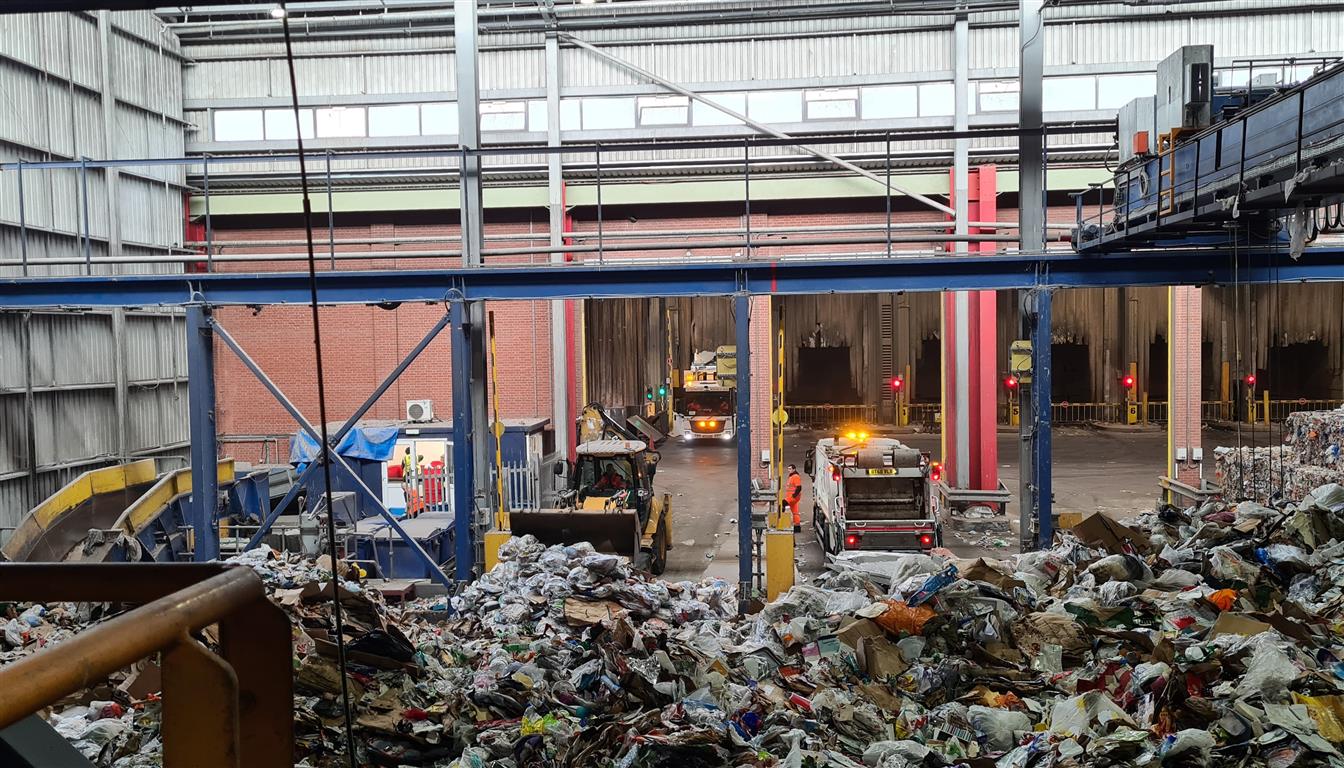
Regularly a human operated crane scoops up some waste and places it onto a conveyor belt, which transports it to the pre-sorting area where a machine splits the orange sacks (though it misses some, as seen in photos below).
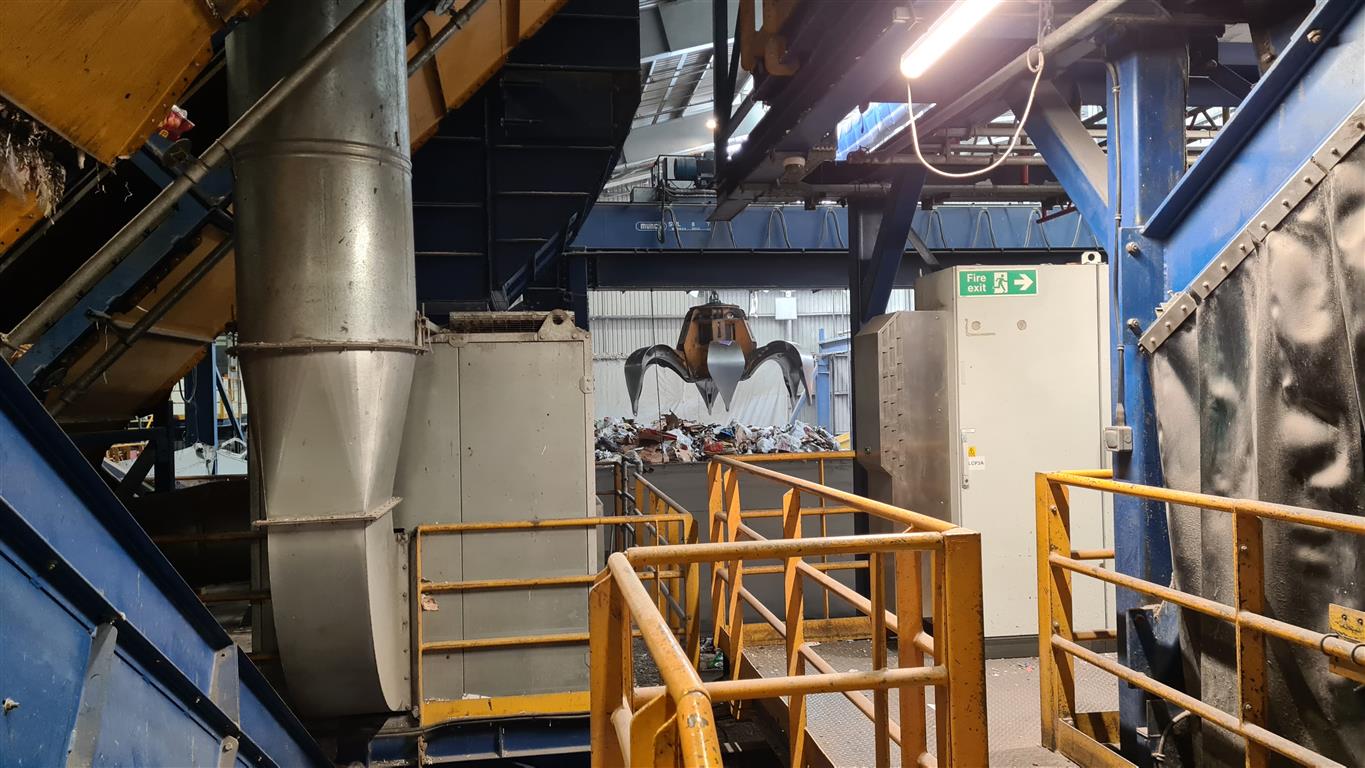
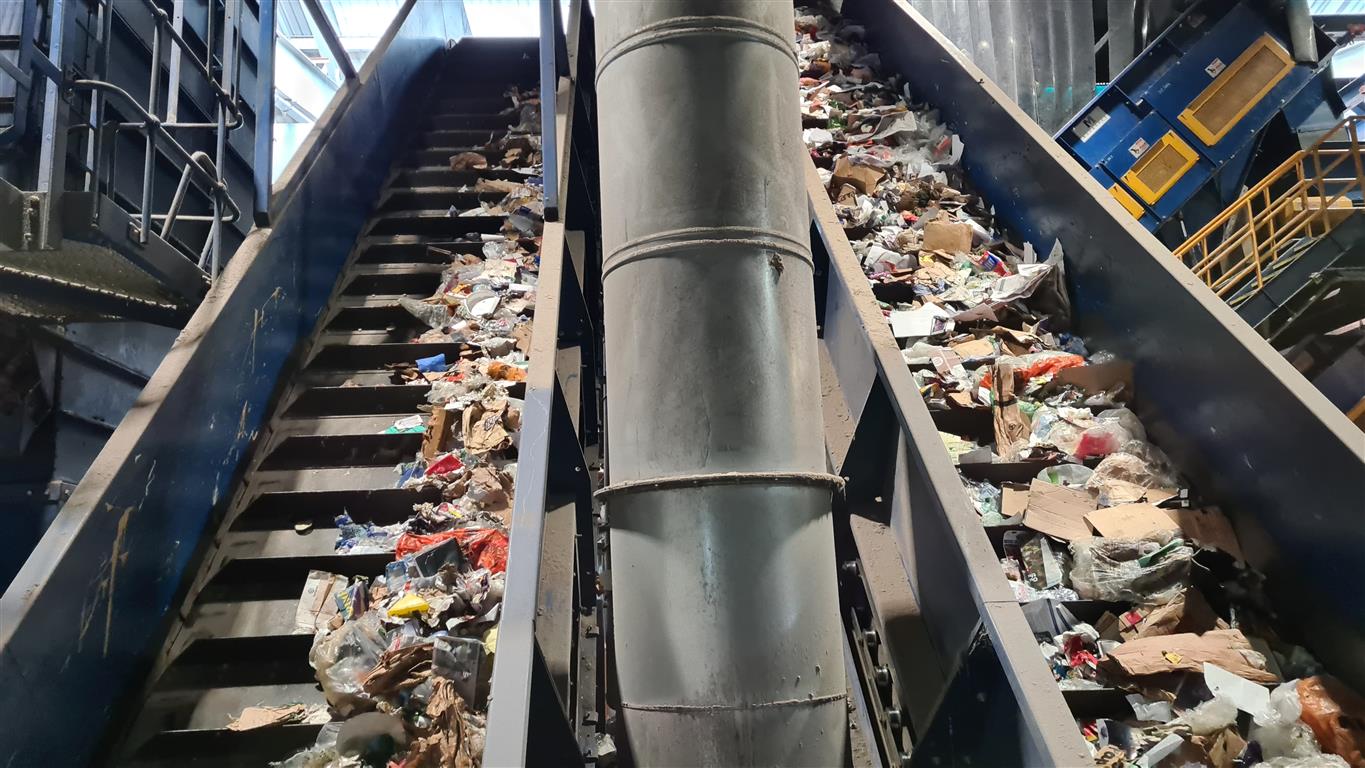
The Smugglers Way site is quite compact, and the MRF is built on three different levels, making maintenance more challenging.
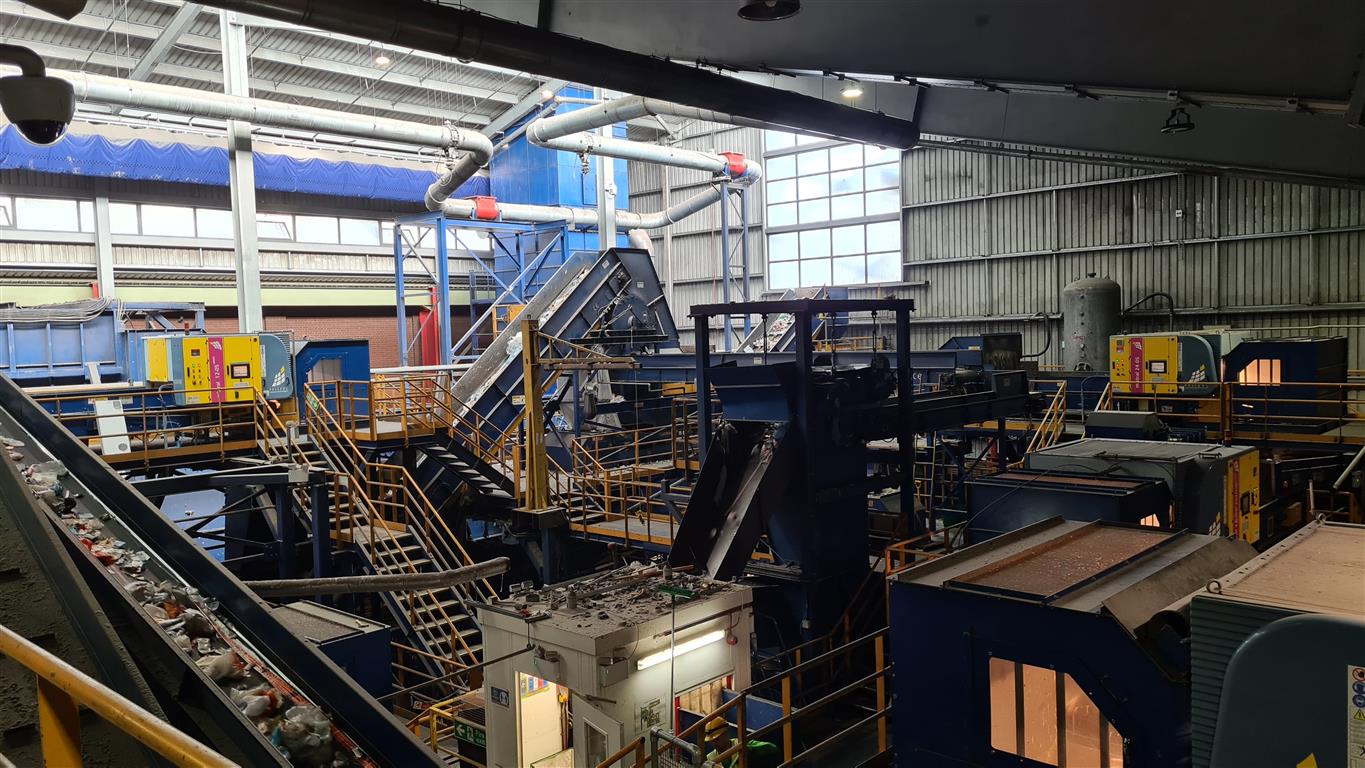
Human screening at the beginning of the process
Human workers intervene in various cabins at the beginning of the process to help separate materials on conveyor belts and remove obvious contaminants. Materials like plastic bags and hoses, which can entangle the recycling equipment, are also removed. The facility operates from 6 am to 10 pm with two shifts of workers.
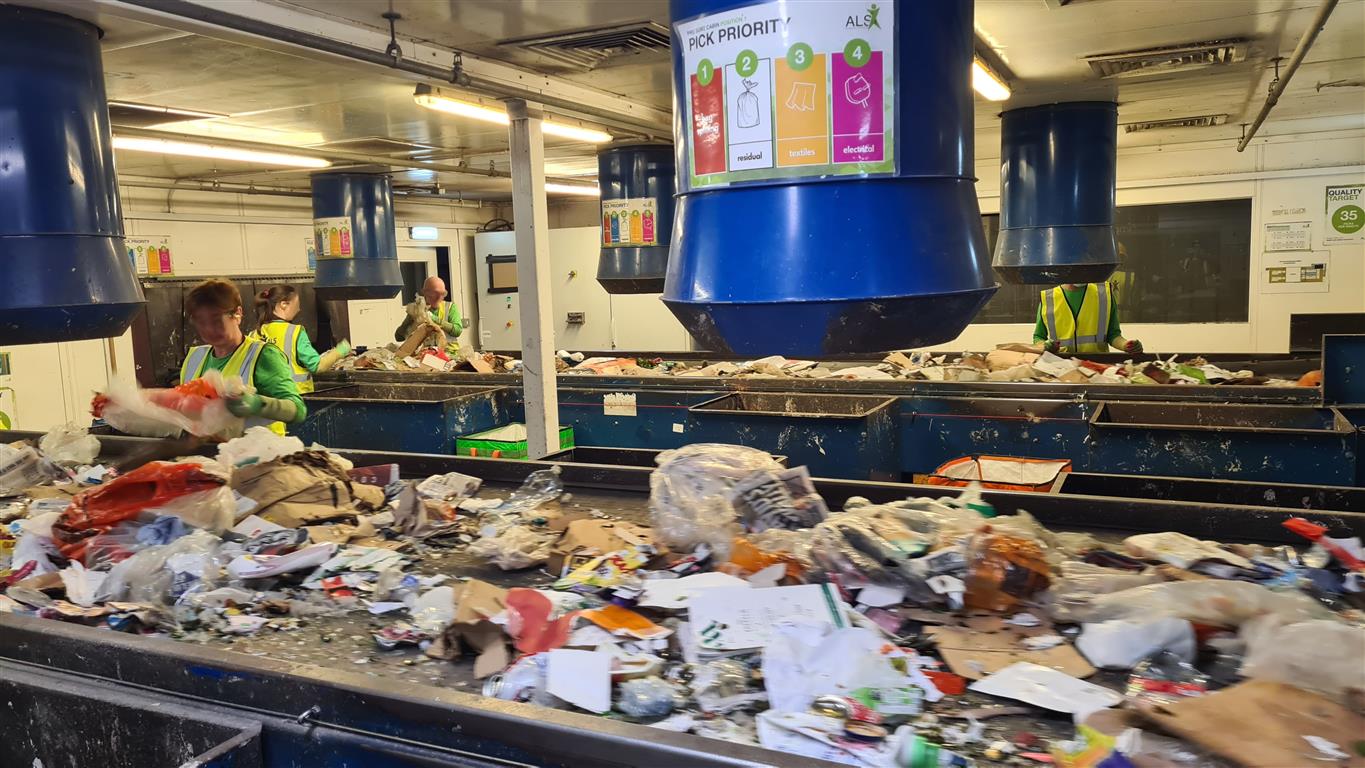
There is no need to thoroughly clean items before placing them in the orange bag; a simple rinse is sufficient.
Despite regular communication on what can be placed in the orange sacks and what cannot, many people still dispose of inappropriate waste into the recycling bags. However, according to Steve, the WRWA Operations Manager, they regularly find clothes and food waste, such as banana skins, fruits, and vegetables. Around 150 tons of textiles are found every month and cannot be recycled due to contamination by food waste, in addition to causing damage to the machines when they become trapped. The amount of trash put into recycling that must go to general waste amounts to about 14% per month. Fortunately, small electrical appliances can often still be pulled out during manual screening and recycled separately.
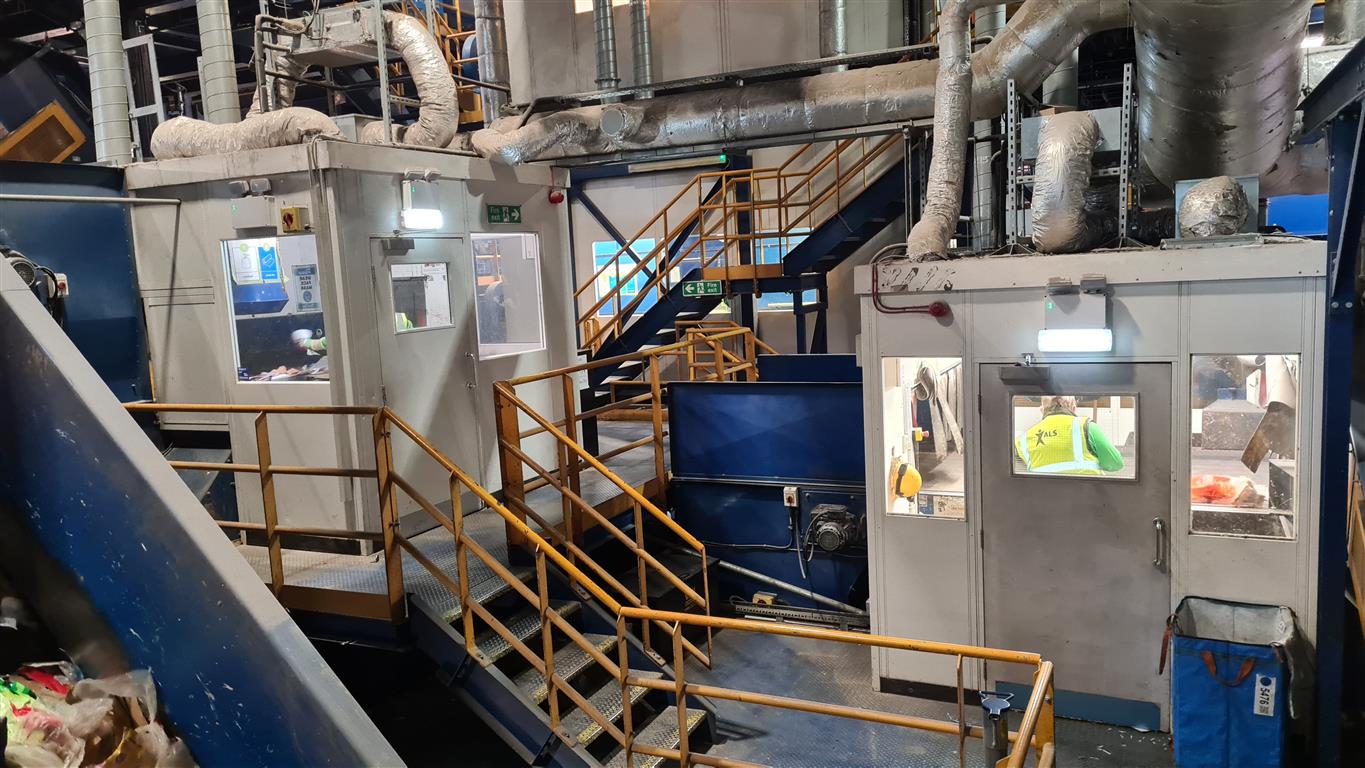
One of the cabins at the very start of the process is responsible for sampling for quality control. This means that employees manually check approximately 60 kg of the recycling dump from a designated lorry and ensure it corresponds to the targeted materials.
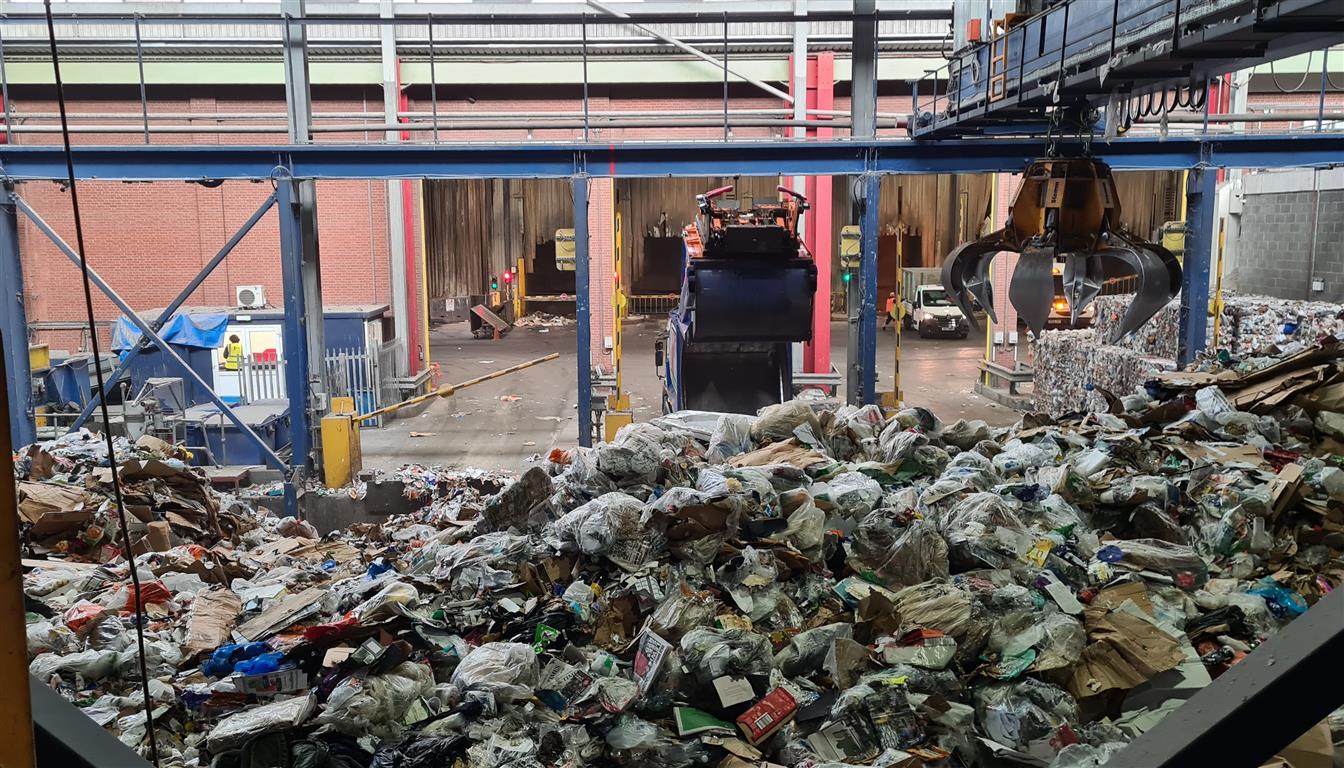
Each machine is dedicated to a specific sorting
Materials are then transported via another conveyor belt to the disk screen, which separates cardboard and papers from other items. Most of the sorting is done by machines such as conveyor belts, screens, magnets, and air classifiers.
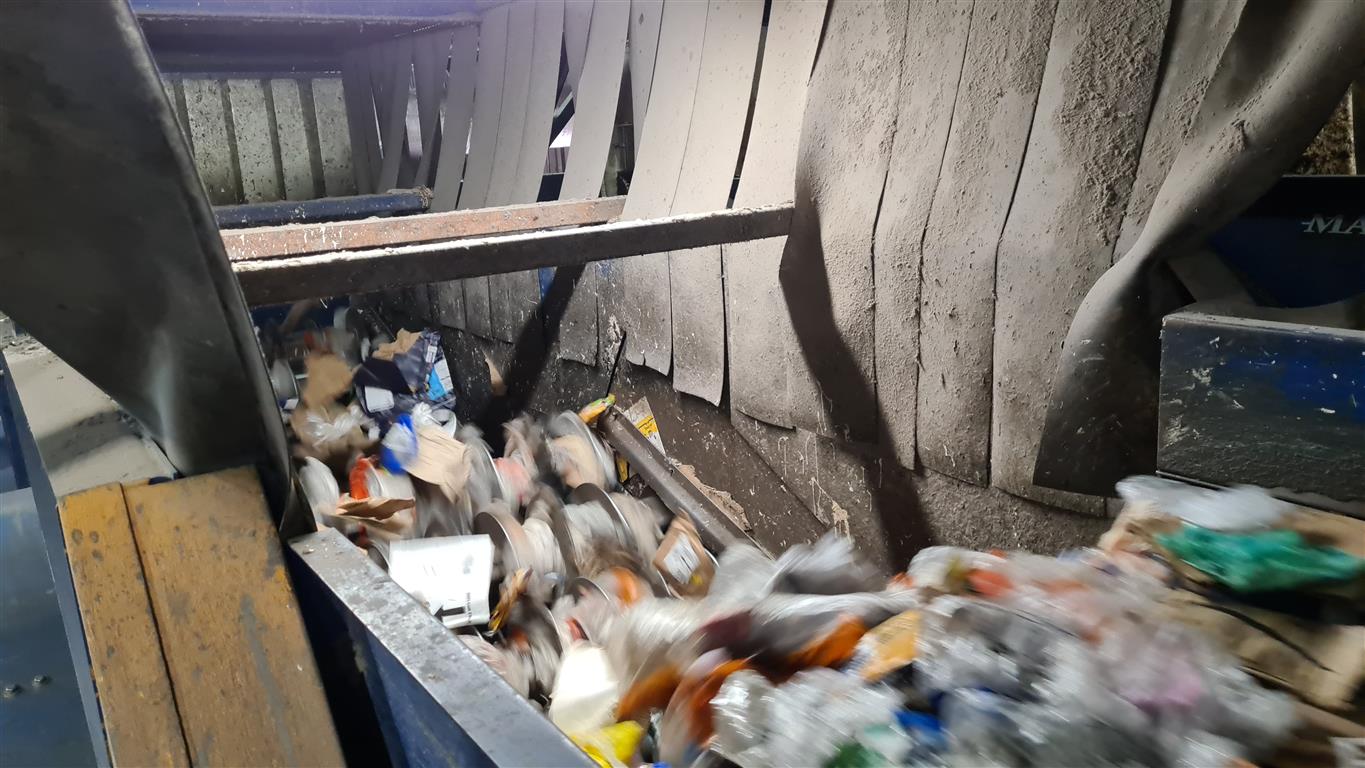
All the different machines have one specific job: first, ballistic machines are responsible for pushing out paper and cardboard. Then, electromagnets separate ferrous metals from plastics and glass, and non-ferrous metals like aluminum are removed with eddy current separators. The glass and plastic streams are further separated by disk screens. The glass is crushed to facilitate transportation. Last but not least, optical machines (using infrared technology) identify plastics (it’s important to keep the cap on bottles, especially milk cartons, as loose caps can easily mix with other materials such as glass, or it can jam the machines).
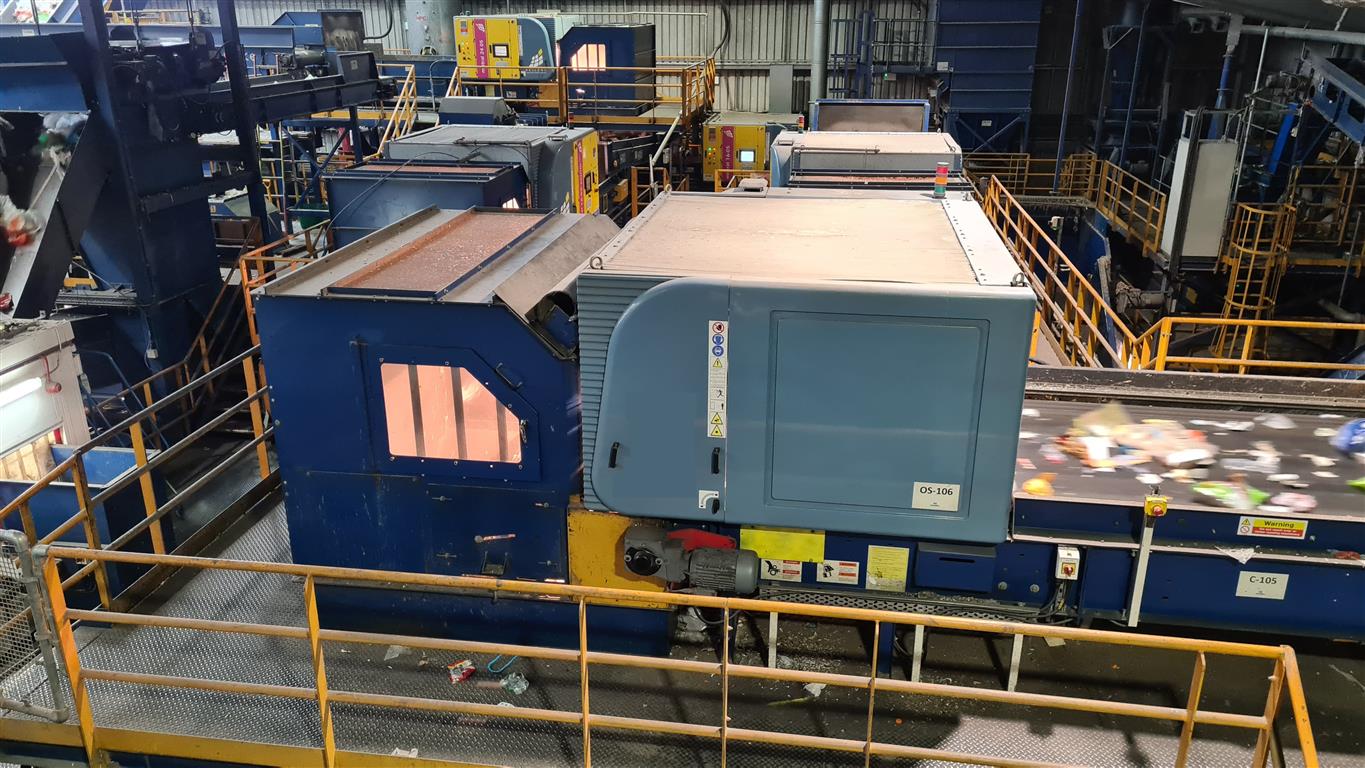
At the end of the process, when the different types of materials have been sorted, they are compacted and sent to other facilities for further processing, involving cleaning, washing, shredding, or other methods to prepare the materials for transformation.
Transportation of General Waste is made by barge. A fleet of five tugs and more than 50 barges transporting waste on the river are operated by Cory Environmental Ltd, a recycling and waste management contractor in London, on all their sites. This use of the river removes around 100,000 vehicle journeys from London’s roads each year.
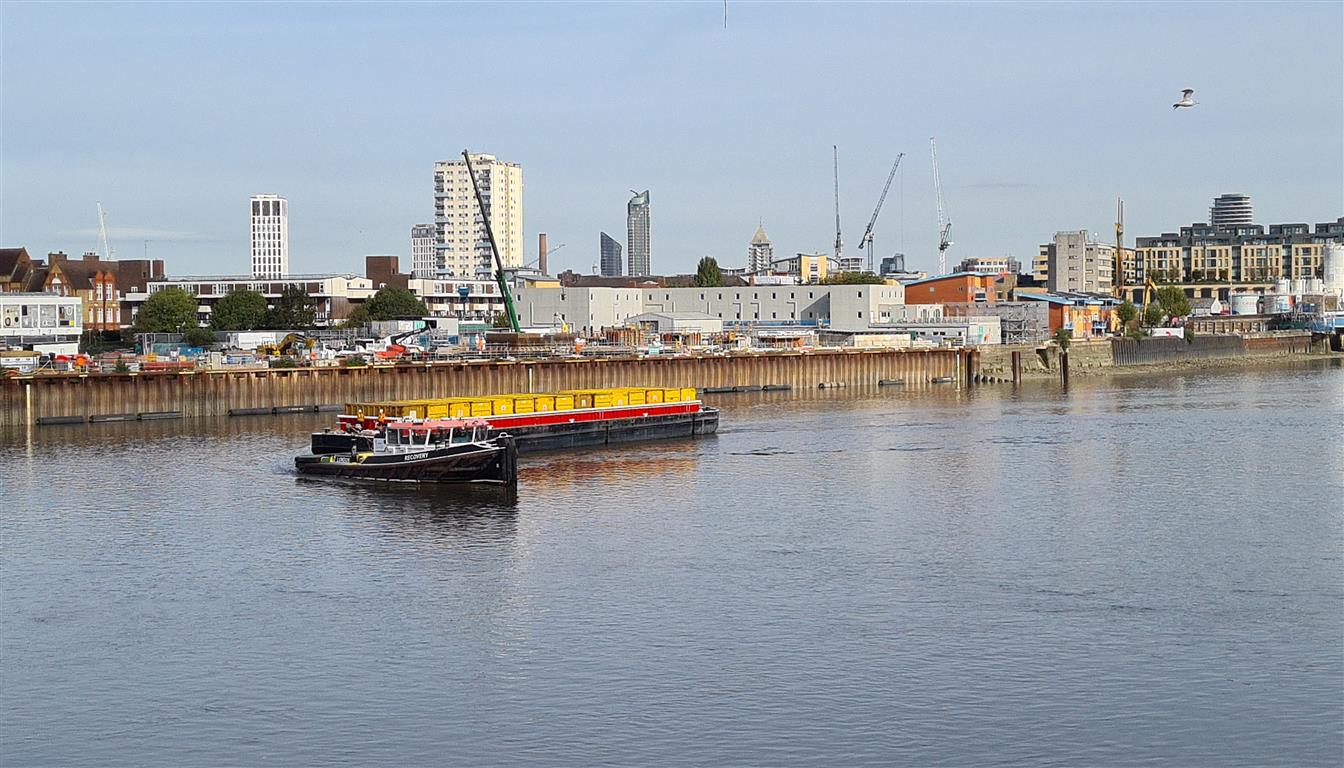
Recycling materials are transported to various facilities by road. Cory have explored the potential of delivering recyclable material by barge but they need a different working wharf to facilitate this.
Smugglers Way recycling centre operates for five boroughs
The Western Riverside Waste Authority (WRWA, Smugglers Way, Wandsworth, SW18 1JS) recycling facility is the primary recycling centre for Wandsworth but also for Hammersmith & Fulham, Kensington and Chelsea and Lambeth. In addition there is a specific agreement with Westminster borough to allow residents to deliver waste and recycling to the facility. WRWA is one of the four statutory joint waste authorities, meaning it operates independently of a specific borough but depends on central government. Some boroughs, such as the City of London, Merton, Southwark, and others, have their independent recycling authorities. The waste authorities were created by the Environmental Protection Act 1990 for waste regulation purposes. Prior to its abolition in 1986, the Greater London Council was the waste disposal authority for Greater London. Two decades ago, both government and the Mayor of London attempted to unite the different waste authorities without success.
The WRWA centre is solely for disposal, and each associated borough manages its own waste collection. For example, Wandsworth has a weekly bin collection for both general waste and recycling, while Kensington and Chelsea have twice-weekly collections, contributing to their high recycling rates. The waste transfer station located near Wandsworth roundabout is one of two managed by WRWA. The other, Cringle Dock, is situated in Nine Elms (east of Battersea), near the Battersea Power Station. Smugglers Way welcomes residents in cars and vans (both requiring booking since March 2021, unrelated to Covid, but to better manage busy days especially at weekends), while Cringle Dock is more industrial and not for individual cars.
Both sites are owned by WRWA and operated by Cory, which operates the MRF with subcontractors.
In 2016, Wandsworth Council approved a planning application to modernise the waste station at Cringle Dock, which had become outdated (posing odour issues for nearby luxury flats). The plan involved enclosing it within a structure, with flats on top, but the site has not been transformed yet.
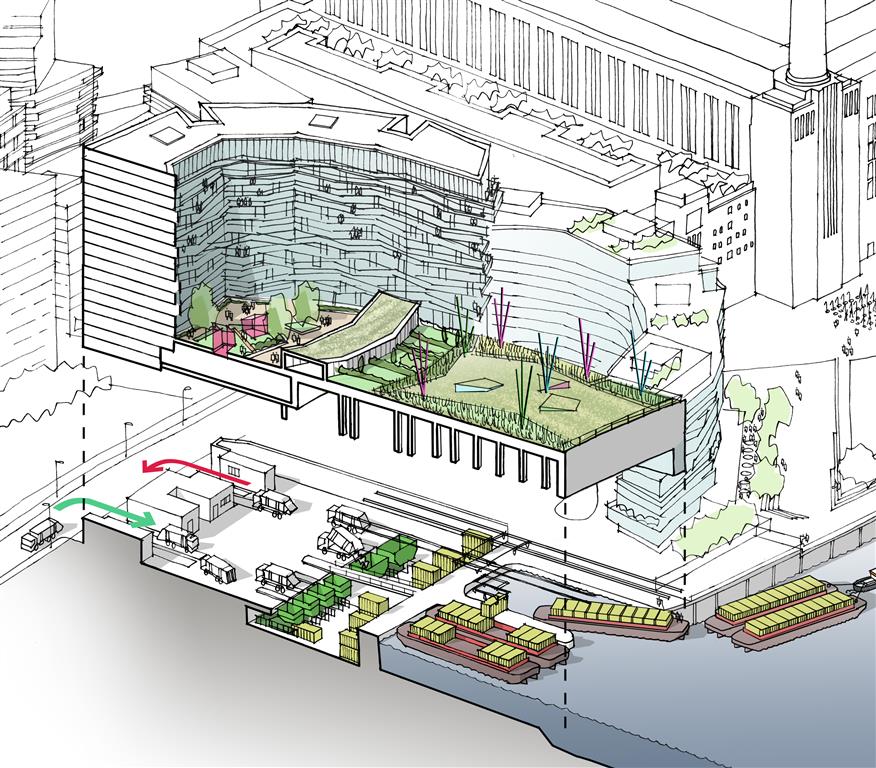
The WRWA in Smugglers Way has witnessed the extensive redevelopment of the former B&Q site on the southern part of the area. The new constructions are not yet finished, but a significant portion of the exterior has been completed, providing a good indication of the area’s future.
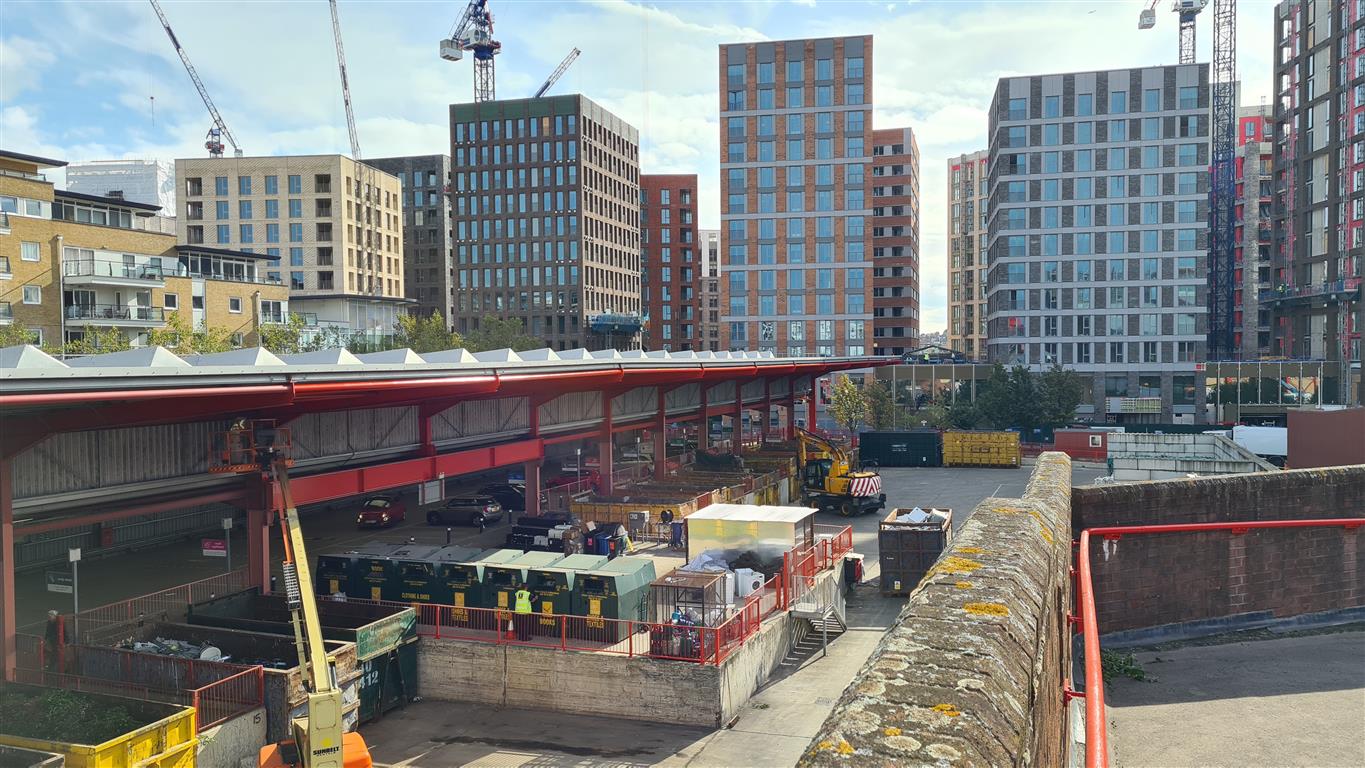
With the recycling centre now surrounded by new residential developments, many of which are marketed as “luxury” units, a plan similar to the one for Cringle Dock becomes more likely for Smuggler Way. However, a major challenge will be finding a temporary location for the waste station while the redevelopment is underway. With Wandsworth permitting extensive redevelopment along most of its riverbanks, this prospect becomes increasingly daunting.
